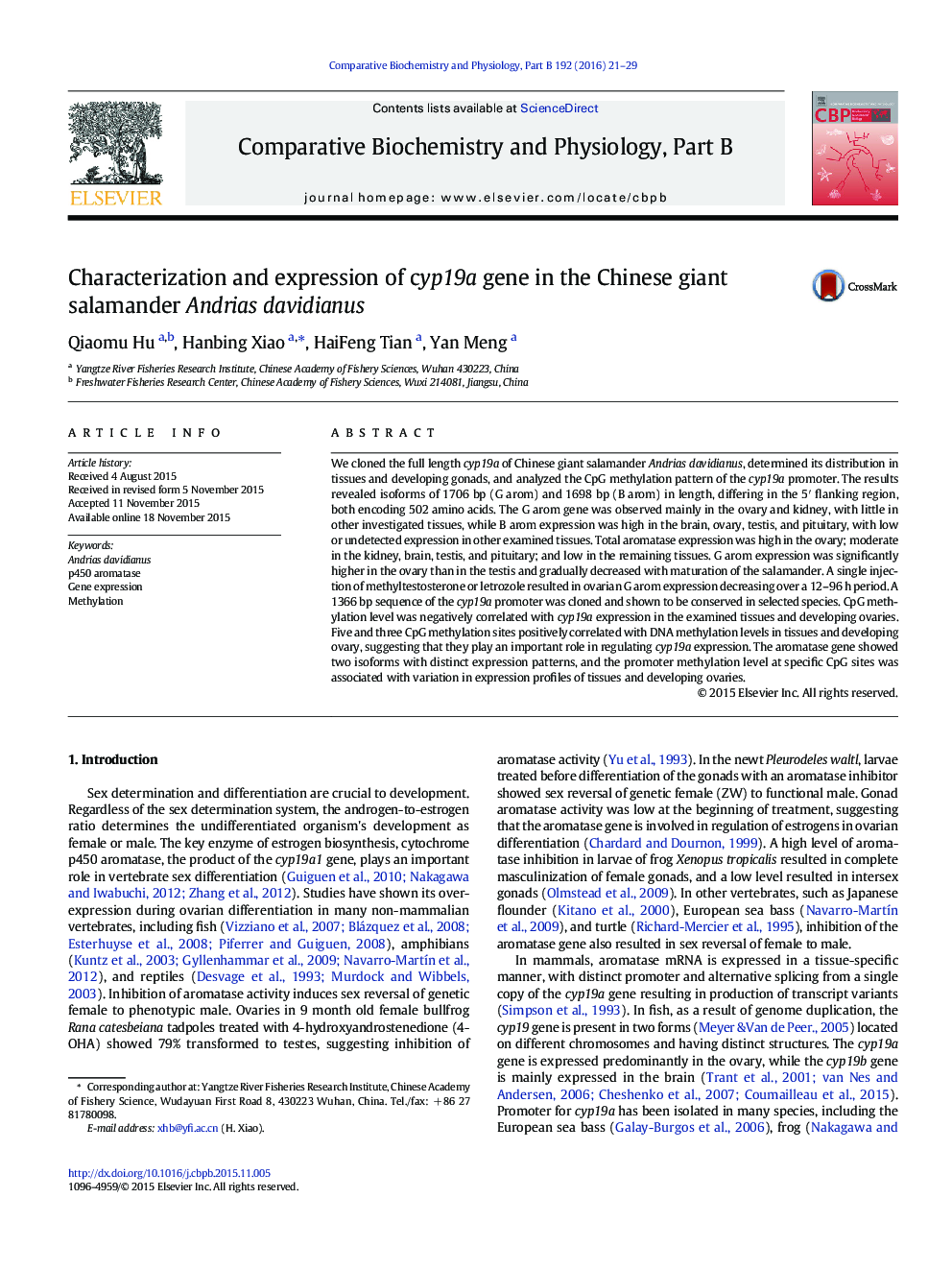| Article ID | Journal | Published Year | Pages | File Type |
|---|---|---|---|---|
| 1975100 | Comparative Biochemistry and Physiology Part B: Biochemistry and Molecular Biology | 2016 | 9 Pages |
We cloned the full length cyp19a of Chinese giant salamander Andrias davidianus, determined its distribution in tissues and developing gonads, and analyzed the CpG methylation pattern of the cyp19a promoter. The results revealed isoforms of 1706 bp (G arom) and 1698 bp (B arom) in length, differing in the 5′ flanking region, both encoding 502 amino acids. The G arom gene was observed mainly in the ovary and kidney, with little in other investigated tissues, while B arom expression was high in the brain, ovary, testis, and pituitary, with low or undetected expression in other examined tissues. Total aromatase expression was high in the ovary; moderate in the kidney, brain, testis, and pituitary; and low in the remaining tissues. G arom expression was significantly higher in the ovary than in the testis and gradually decreased with maturation of the salamander. A single injection of methyltestosterone or letrozole resulted in ovarian G arom expression decreasing over a 12–96 h period. A 1366 bp sequence of the cyp19a promoter was cloned and shown to be conserved in selected species. CpG methylation level was negatively correlated with cyp19a expression in the examined tissues and developing ovaries. Five and three CpG methylation sites positively correlated with DNA methylation levels in tissues and developing ovary, suggesting that they play an important role in regulating cyp19a expression. The aromatase gene showed two isoforms with distinct expression patterns, and the promoter methylation level at specific CpG sites was associated with variation in expression profiles of tissues and developing ovaries.
